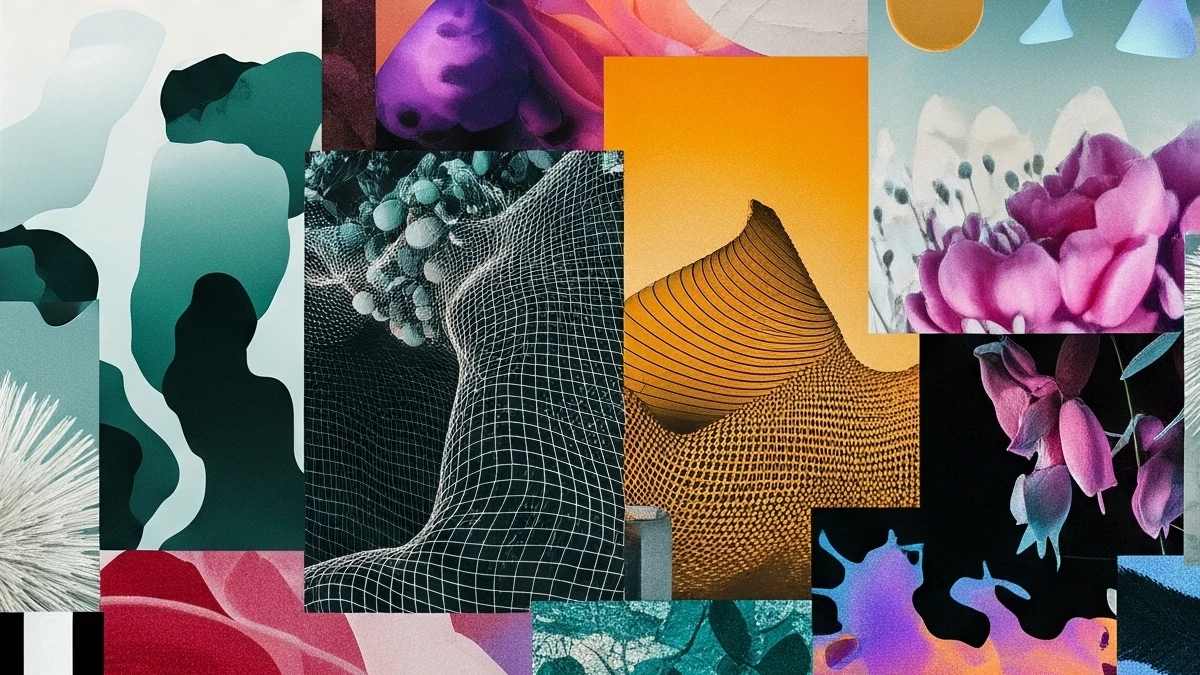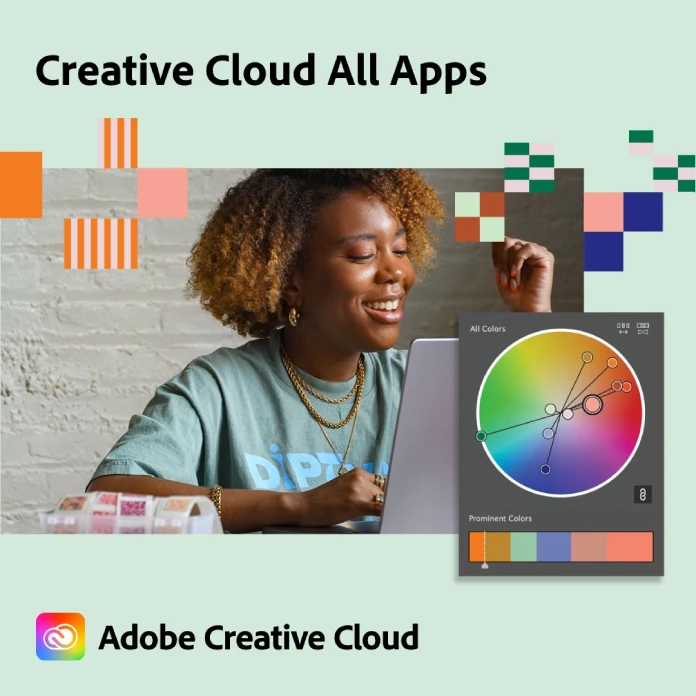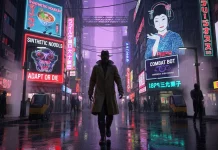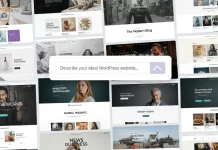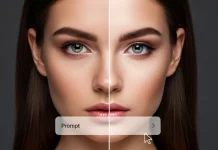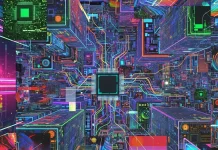This post contains affiliate links. We may earn a commission if you click on them and make a purchase. It’s at no extra cost to you and helps us run this site. Thanks for your support!
Generative AI is no longer a futuristic concept. Professional designers already use intelligent algorithms to translate ideas into polished visuals faster than ever. Art directors at big agencies and freelance creatives alike face relentless deadlines, complex campaigns, and shrinking budgets. They need AI tools that take repetitive tasks off their plate and let them focus on the core of design — storytelling, composition, and style. Adobe Firefly emerges at this intersection of creativity and automation. With deep integration across the Adobe Creative Cloud and commercially safe outputs, Adobe Firefly promises to be the best AI tool for professional designers.
Designers often ask whether it can do more than just generate wild fantasy images. Does it understand nuanced prompts? Can it handle video or vector graphics? Is the interface intuitive, and how does it stack up against tools like Midjourney, Gemini, or ChatGPT? This article answers those questions, explores Adobe Firefly’s latest features, and evaluates its strengths and limitations. The goal is to provide an authoritative resource that graphic designers, marketers, and creative directors will trust and reference when choosing an AI companion.
What is Adobe Firefly?
At its core, Adobe Firefly is an AI‑powered creation engine that spans images, video, vector art, and 3D rendering. Rather than operating as a standalone app, Adobe Firefly acts as an intelligent layer across the entire Creative Cloud. The unified platform allows users to start a concept in Firefly and then continue editing in Photoshop, Illustrator, Premiere Pro, or Express without leaving the ecosystem. For designers who juggle multiple disciplines, this seamless workflow is a major advantage.
Unlike many generative tools that scrape unlicensed material, Adobe Firefly is trained on a library of Adobe Stock assets, public domain works, and contributions from creators who have opted in. This ethical training means the outputs are commercially safe and indemnified, a non‑negotiable requirement for professional use. New updates in 2025 expand the training set even further and reinforce Adobe’s commitment to responsible AI.
Who benefits from Adobe Firefly?
Adobe Firefly’s feature set is tuned for two main groups. The “Integrated Professional” is the designer who bounces between Photoshop, After Effects, and Illustrator. Those creatives use Firefly to generate a 3D product mock‑up, create B‑roll for a storyboard, and maintain brand consistency through Style Kits. The “Empowered Marketer” leads a small team that needs an entire campaign, not just a single image. Firefly within Adobe Express acts as a multiplier, generating on‑brand visuals, video clips, and ad copy at scale.
Even though the tool is aimed at professionals, beginners can jump in without a steep learning curve. Reviewers often note that Adobe Firefly is very easy to use, with almost no learning curve. Clear prompts and visual cues guide users through the process, and the web interface allows novices to generate images by simply typing a description. This accessibility expands the platform’s appeal beyond seasoned creatives.
The bedrock principle: ethical and commercially safe
AI‑generated content raises thorny questions about copyright and training data. Unlike some competitors, Adobe Firefly’s models are trained exclusively on licensed Adobe Stock content, public domain works, and an opt‑in library where creators are compensated. This ethical stance isn’t just marketing. Each Firefly output is tagged with content credentials, a metadata layer that discloses the model used and the source of the training data. For brands worried about legal exposure, this feature alone makes Adobe Firefly a safer choice.
Core features that set Adobe Firefly apart
Structure Reference and Style Kits
One of the most striking additions from 2025 was Structure Reference & Style Kits. Instead of relying solely on text prompts, designers can upload a sketch or photo to guide composition and apply a pre‑defined Style Kit with brand colors, fonts, and reference images. Imagine sketching a product layout, selecting your “Minimalist Skincare Brand” kit, writing a simple description, and receiving four compositions that match both your drawing and your brand palette. This feature accelerates the moodboard stage and ensures brand consistency without manual tweaking.
Generative Fill & Expand — now for video
Firefly’s Generative Fill blew minds when it debuted in Photoshop. Designers could remove objects or extend backgrounds with a single prompt. In 2025, this feature moved beyond still images. The Generative Fill & Expand tool now works in Premiere Pro and After Effects, allowing editors to mask a microphone or unwanted subject in a video clip, click “remove,” and watch Firefly replace it convincingly. It can even convert a horizontal 16:9 shot into a vertical social story by intelligently generating extra space at the top and bottom. This type of time‑saver could streamline social media deliverables for agencies and creators.
Text to Vector and Text to 3D Image
Illustrators and UI designers will appreciate Text to Vector. Integrated into Adobe Illustrator, it generates editable SVG graphics from a written description. For instance, typing “minimalist logo of a bicycle” produces several vector options with clean lines and anchor points ready for refinement. For product designers and concept artists, 3D to Image lets you import a simple 3D model and prompt Firefly to render it into a photorealistic scene — think of a champagne bottle on a bed of ice or sunglasses under studio lighting. These tools combine generative speed with the precision of Adobe’s vector and 3D workflows.
Video generation and enhancement
Text‑to‑video, introduced in early 2025, promised to generate five‑second, 1080p clips from a prompt, complete with camera control and aspect‑ratio options. Subsequent updates have added Composition Reference, allowing users to upload a video to transfer its edges, depth, and camera movements onto a new scene. Style Presets, such as anime or claymation, help designers quickly choose a visual direction. Another innovation, Keyframe Cropping, lets creators designate key start and end frames to control motion.
Generative video is a work in progress. Many independent reviewers noted that the tool is simple to use — the interface shows a prompt box and a few drop‑down menus — but lacks sophisticated filming options like dolly shots. Early reviews concluded that Firefly’s video generator is nowhere near good enough to warrant a hefty subscription price. Test videos suffered from unrealistic human figures and limited realism, and critics argued that the current versions are best suited for storyboards rather than final footage. Adobe has responded by partnering with leading video model providers — Luma AI’s Ray3 model generates cinematic HDR video, and new models from Runway and Moonvalley offer specialized aesthetics. These additions show that Adobe is committed to improving video quality by leveraging third‑party innovation.
Text to sound, translation, and avatars
Creativity goes beyond visuals. Generate Sound Effects is a beta feature that turns text descriptions or vocal imitations into royalty‑free sound effects. Users can upload a video or audio file, describe a sound, and Firefly will generate a clip that fits the timing and energy of the recording. A similar tool translates spoken dialogue into over twenty languages while matching the original voice’s tone and cadence. This audio translation can expand a project’s global reach, and the translation workflow is simple: upload a video, choose languages, generate, and download. Firefly also turns scripts into videos featuring virtual avatars, blending voice‑over with generative animation.
Firefly Boards: a generative‑first canvas for ideation
Creative brainstorming often happens on whiteboards littered with images, notes, and sketches. Firefly Boards transforms that process into an infinite digital canvas where you can generate or upload images and videos, remix ideas, and link external documents. The board integrates with Adobe Express and Photoshop, allowing you to sync files and edit assets directly. With an “infinite canvas,” designers can drag and drop items, generate variations, crop images, and reorganize content as they iterate. Recent updates include Presets that automatically apply styles, Generative Text Edit for editing text in images without switching apps, and Describe Image, which writes a prompt based on an uploaded picture to help refine generation.
Boards also host partner models from Runway, Moonvalley, Luma AI, and others, giving teams access to multiple creative aesthetics in one place. The platform is built for collaboration: users can invite teammates, link documents for real‑time updates, and share boards for feedback. This collaborative emphasis suits agencies and in‑house teams who need to iterate quickly across disciplines.
Integration across Adobe’s ecosystem
One of Adobe Firefly’s biggest strengths is its deep integration across Creative Cloud. Reviews repeatedly mention that Firefly “lives inside tools like Photoshop, Illustrator, InDesign, Premiere Pro, and Express.” You can call Firefly’s features from a panel within Photoshop to add or replace elements in your image and then edit them with layers, masks, and brushes. In Illustrator, you can generate vector art and continue editing anchor points. In Premiere Pro, you can apply generative motion graphics and sound effects.
Integration is not limited to Adobe’s own models. In April 2025, Adobe opened Firefly to third‑party AI models such as Google’s Imagen 3 and Veo 2, OpenAI’s GPT image model, and Black Forest Labs Flux. Users can choose a model from a dropdown and see the aesthetic differences between outputs. Combining models allows designers to mix styles or correct biases in specific outputs. By mid‑2025, Firefly Boards offered partner models like Runway’s Aleph and Moonvalley’s Marey, while Photoshop integrated Google’s Gemini 2.5 Flash Image and Black Forest Labs FLUX.1 Kontext to improve generative fill. This multi‑model flexibility means creators are no longer locked into one AI aesthetic; they can pick the tool that suits the project.
Interface, user experience, and workflow
The design of Adobe Firefly is intentionally simple. Professional designers praise its “user‑friendly interface” and note that its clean layout guides users through image generation. The workflow — from entering a prompt to refining and editing — is smooth and coherent. Testers highlight that there is almost no learning curve, which lowers barriers for newcomers. Firefly also provides clear visual feedback during generation, letting users tweak prompts and settings in real time.
However, this ease of use comes at a cost. Advanced users sometimes find the controls limited. Some independent reviewers pointed out that while Firefly is intuitive, it may not offer the depth of customization that experienced artists crave. There are occasional performance hiccups with complex prompts or high‑resolution images. Other critics note the absence of filmmaking controls such as dolly shots, indicating that the interface needs more sophistication for professional cinematography.
Pricing, plans, and credit system
Adobe uses a unified credit system for generative operations. Different actions have different costs: one credit for a standard image or vector generation, one credit for Generative Fill or Expand, five credits for a five‑second video, and three credits for a 3D‑to‑image render. Plans range from a Standard Plan with 2,000 credits for US$9.99/month to a Pro Plan with 7,000 credits for US$29.99/month and a Premium Plan with 50,000 credits for US$199.99/month. A Creative Cloud Pro subscription bundles 4,000 credits with the full suite of Adobe apps for US$69.99/month. There is also a free tier with limited credits, letting users test features before committing. Enterprise plans offer custom model training and high‑volume production for marketing teams.
Pricing for video has drawn criticism. Early evaluations of the text‑to‑video beta argued that charging US$10 to US$30 per month is unreasonable given the tool’s current quality. Videos are restricted to five seconds and 1080p resolution, and there is no unlimited tier. Critics note that users burn through credits quickly when experimenting with prompts, making the service expensive for iterative work. Adobe has since introduced new subscription offers — Standard, Pro, and Premium — that include unlimited canvases in Firefly Boards and access to partner models. Designers should weigh the value of integrated workflows and commercial safety against these costs.
Strengths and opportunities
- Integrated workflow: Firefly acts as a central hub connecting Photoshop, Illustrator, Premiere Pro, Express, and third‑party models. This integration minimizes context switching and speeds up production.
- Brand consistency: Structure Reference, Style Kits, and advanced prompt control help maintain brand aesthetics across multiple assets. Companies can upload brand guides and let Firefly generate on‑brand visuals automatically.
- Commercial safety: Ethical training and content credentials ensure outputs are legally safe. For marketers and agencies, this reduces legal risk compared to unregulated tools.
- Creative exploration: The ability to mix partner models, apply Style Presets, or generate sound effects and avatars encourages experimentation without leaving the Adobe ecosystem. Designers can quickly iterate on ideas, which is essential for moodboards and storyboards.
- User‑friendly interface: The intuitive layout lowers barriers to entry for beginners while still providing professional tools like Generative Fill and Text to Vector.
Limitations and critiques
- Video quality and controls: Early iterations of Firefly’s video model produce short, 1080p clips with limited realism and lack advanced camera moves. Testers found that human subjects looked unrealistic and that the results were unusable for stock footage replacement. Until partner models like Luma Ray3 become mainstream, designers should treat the video tool as a storyboard generator rather than a final production solution.
- Limited customization: While the interface is simple, power users may crave more control over prompts, blending modes, and model parameters. Independent reviews note that advanced designers might find the interface “limited” and desire greater customization options. This is especially true when comparing Firefly to Midjourney’s granular style commands.
- Model quality versus competitors: Independent testers observed that outputs from tools like Midjourney sometimes surpass Firefly in artistic quality. Firefly excels in workflow and safety but may lag in pure artistry.
- Generative credits: The credit system can become expensive for experimentation or high‑volume production. There is currently no unlimited plan for video, and subscription tiers can be confusing.
How does Adobe Firefly compare to competitors?
According to independent comparisons, Adobe Firefly’s core strength is workflow integration and commercial safety, while Midjourney excels at artistic power, and DALL‑E offers conversational creativity. Firefly is best suited for multi‑format campaigns, video editing, and brand‑consistent assets. Midjourney remains the go‑to for high‑end concept art, and DALL‑E excels at complex prompt understanding. Designers should choose the tool that matches their project: Firefly for integrated workflows, Midjourney for artistic explorations, and DALL‑E for idea brainstorming.
Practical use cases for professional designers
Social media campaigns: Marketing teams can generate carousels, reels, and thumbnails with consistent typography and style using Firefly’s text effects and Style Kits. Generative sound effects and translation tools allow creators to produce multilingual videos with matching voice tone. Firefly Boards help teams ideate quickly and share ideas before final production.
E‑commerce and product mock‑ups: Product designers can use the 3D to Image feature to render packaging or mock‑up scenes without staging expensive photo shoots. Generative Fill and Expand in Photoshop and Premiere Pro can remove background distractions or extend product videos to fit various formats. Partner models like Luma Ray3 generate cinematic B‑roll for product launches.
Branding and illustration: Illustrators can use Text to Vector to create icons and logos that remain editable and scalable. Style Kits ensure that every asset matches the brand’s color palette and typography. Content credentials add an extra layer of trust for brand clients.
Education and training: Educators can translate course videos into multiple languages, generate diagrams and infographics, and experiment with 3D models to create immersive lessons. The simple interface makes Firefly accessible for non‑designers, empowering teachers and students to create polished visuals quickly.
Personal perspective and future outlook
As a design critic, I have watched generative AI mature from novelty to necessity. Adobe Firefly stands out because it isn’t just an image generator — it’s a comprehensive creative assistant built into the tools professionals already use. The combination of ethical training, seamless workflow integration, and cross‑media capabilities makes Firefly a compelling proposition.
That said, the tool is still evolving. Video generation needs significant improvements before it can replace stock footage. I also hope to see deeper customization options and finer control over model parameters. The integration of partner models suggests that Adobe recognizes these gaps and is willing to collaborate with the broader AI community. Over the next year, I expect Firefly to refine its video output, introduce new models, and perhaps offer more flexible pricing.
Ultimately, Adobe Firefly is not a replacement for designers — it’s a creative co‑pilot. It accelerates ideation, reduces repetitive tasks, and ensures legal safety. If you value workflow efficiency, brand consistency, and commercial peace of mind, then Firefly deserves a place in your toolkit. But if you’re chasing avant‑garde artistry or cinematic realism, keep experimenting with complementary tools like Midjourney and the latest video models. The future of design will likely be a hybrid where human intuition and multiple AI tools work together.
Feel free to find other AI-related articles here at WE AND THE COLOR.
Subscribe to our newsletter!

